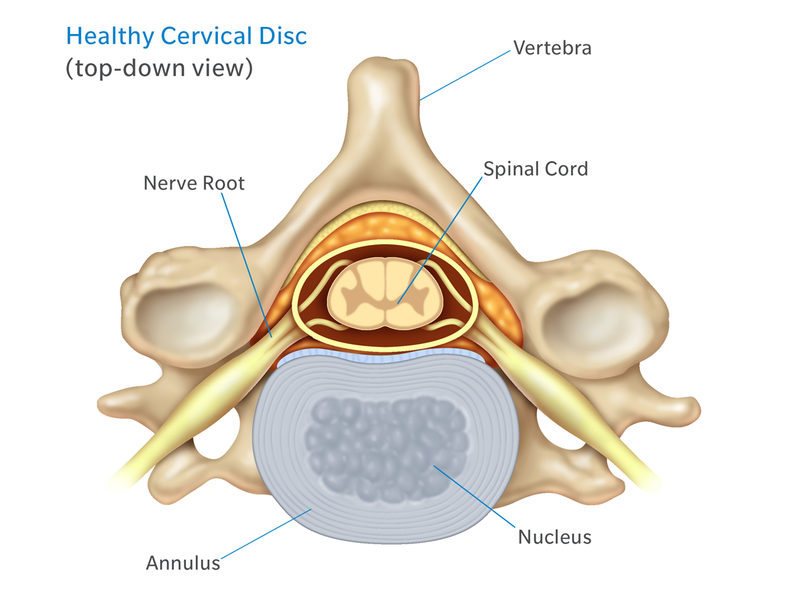“So what does this mean to you?”
This is typically the first question I ask when I’m evaluating a person that received this diagnosis. My main goal is to answer any questions, clear up any confusing and scary things the person has been told, and, offer reassurance that everything will be fine.
So what is degenerative disc disease?
Degenerative disc disease (DDD) is a label for the degenerative changes that occur in the spine, and typically it is referring to the discs. Everyone develops some level of degenerative changes – some more, some less than what is considered average. It is possible to have above average changes and no pain, or, below average changes and intense pain. The reason is complex, but it has to do with the nature of pain. We can get into that later. There are typically other findings associated with DDD, like osteophytes (bone spurs), facet joint arthropathy (arthritic changes to the joint), foraminal narrowing (the foramen is the space nerves pass through from the spinal cord to the rest of the body). The narrowing is likely because of ostephytes and face joint arthropathy. Again, you can have these findings and zero pain, or none of these findings and have intense pain.

A good place to start in order to understand this diagnosis is to understand the components of the spine. In Figure 1 you can see the NUCLEUS, the center of the disc. The outer ring is called the ANNULUS. Where the NERVE ROOTS exit the spinal cord to the body is the FORAMEN (not labeled).

Now we can compare that to a degenerated disc. The biggest thing you will notice is the fissures that form in the annulus. The fissures are the “degeneration,” and they are just the normal process of aging. Over time, small fissures can combine and become big fissures, and those fissures can break through the edge of the annulus. Additionally, the disc material can travel through those fissures, which would be a HERNIATED DISC.
Why does it hurt?
It is believed that there are no “pain” receptors in the center of the disc as well as the inner edges of the annulus, only in the outer edges. So you won’t feel pain unless the outer edges of the annulus are affected. The biggest issue with the neck (and the spine in general) is that there is not much room back there for a bunch of extra stuff without irritating the nerve. Things considered extra stuff could be:
- Inflammation – if the annulus is damaged, the body will create an inflammatory response, just like it does with any damaged tissue in the body. Inflammation increases pain sensitivity. That is why a bruise hurts, because the area is sensitive. That’s why people get prescribed steroid dose packs after an acute disc injury and their pain is reduced. It doesn’t “heal” anything, it just reduces the stuff that makes your pain increase.
- Herniated disc material – depending on where the herniation is, the material can make contact with the nerve root.
- Osteophytes and/or face joint arthropathy – more things that can encroach on the nerve root, or just limit neck ROM.
When that space is compromised and things compress or irritate the nerve root, that is likely when you will get diagnosed with CERVICAL RADICULOPATHY. With that, you can experience pain, weakness, and/or numbness and tingling in the neck, shoulder, or even into the arm.
A more severe diagnosis, but way (way, way) less common, is CERVICAL MYELOPATHY, which actually involves compression of the spinal cord. Neck pain is not even required to have this. Signs and symptoms include sensation loss in the hands and feet, problems with things like holding a cup, using buttons/zippers, unsteady gait or difficulty with stairs, and incontinence. Oh by the way, this is a MEDICAL EMERGENCY, so if you experience any of those symptoms, immediately go to the Emergency Room. I perhaps should have put this in the first paragraph.
Summary
So Degenerative Disc Disease is a weird diagnosis because 1) it is basically commentary on the state of things and 2) there is not cure, but that’s okay, but it isn’t really a disease. Treatments are designed to address whatever limitations in function you may have – things like strength loss, ROM restrictions, etc. Cervical radiculopathy typically heals on it’s own, unfortunately not always quickly, and it can be painful. There are things you can do to manage the pain, then you will likely need to restore any ROM and muscle performance issues that were there prior to or resulted since you were limited for some time. Cervical myelopathy – go to the ER. Now.
Image Credits:
Healthy cervical disc – https://www.cervicaldisc.com/blog/anatomy-of-the-neck-causes-of-neck-pain-and-how-to-manage-the-pain
Herniated disc – https://www.spineuniverse.com/conditions/herniated-disc/low-back-disc-disease-herniated-discs
